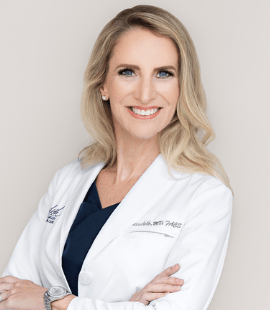
BY LISA B. CASSILETH MD, FACS
Dr. Cassileth, founder of Cassileth Plastic Surgery in Beverly Hills, CA is an industry leader in breast reconstruction. She believes no one should have to live with unsatisfactory results after undergoing breast reconstruction; she strives to make women aware of all breast reconstruction options available to them. Dr. Cassileth invented created her “Direct-To-Implant” one stage breast reconstruction because she felt there had to be a better alternative to traditional tissue expander reconstruction. Dr. Cassileth’s innovative technique allows women to awaken from mastectomy surgery with new breasts, all performed through small incisions.
“It’s exciting and rewarding to provide a new choice for breast cancer patients who are undergoing mastectomy. Reconstructing the breasts at the same time as mastectomy eliminates the risks of multiple surgeries and, more importantly, helps minimize the sense of loss.” – Dr. Lisa B. Cassileth, Board Certified Plastic Surgeon
We’ve compiled a list of commonly asked questions about “Direct-To-Implant” one stage breast reconstruction below:
Q. Don’t you have to make a large incision?
Dr. Cassileth’s technique makes the incision half the width of the breast and is completely hidden in the crease under the breast.
Why do you prefer one-stage to tissue expander reconstruction?
Formerly, tissue expanders were necessary for traditional breast reconstruction, as so much skin was removed in the mastectomy, that expanders were required to stretch out the skin, so that it could accommodate an implant, placed during a second surgery.
With a nipple-sparing mastectomy, the skin and the nipple are completely preserved. There is no longer a need for expanding with a tissue expander when the skin is intact and healthy.
Q. I’ve heard that many people aren’t good candidates for this direct-to-implant breast reconstruction procedure, is that true?
Women who are good candidates for this procedure are sizes A through DD. You can have some droopiness also known as “ptosis”, as you will get a lot of natural lift for the procedure.
Patients who are not good candidates are often large breasted such as DDD and higher, have cancer that involves the breast skin, or are women with many medical problems may not be candidates for this procedure.
Q. What are the risks of one-stage breast reconstruction?
One-stage breast reconstruction has the same or lower risks as tissue expander breast reconstruction, as shown in my paper “One-Stage Immediate Breast Reconstruction with Implants: A New Option for Immediate Reconstruction.” Annals of Plastic Surgery, 2011.
The main risk for all mastectomies is that some of the skin or nipple will die. This is a risk inherent to the mastectomy, as removing the breast tissue removes all the blood vessels going through the breast that supply oxygen to the skin.
After mastectomy, the skin survives only on subcutaneous blood vessels called the “subdermal plexus” that are present in the normal fat right under the skin. It is critical that this layer of subcutaneous fat is preserved during the mastectomy, while removing all the breast tissue. And ideally, this is all done through an incision in the bottom of the breast, because it looks a lot better, and that incision doesn’t disturb the blood flow.
It turns out that this is pretty hard to do, and a lot more technically demanding than an old-fashioned mastectomy, where an incision was made all the way across the breast. In fact, it is so hard to do, that over 30% of mastectomies have some degree of skin or nipple necrosis. I think that is pretty bad, and it is a major complication, it means additional skin has to be removed, and the final result looks bad. I now only work with two mastectomy surgeons at the Bedford Breast Center, as their rate is under 1%.
From plastic surgeons that work with the typical group of mastectomy surgeons, you may hear that one-stage breast reconstruction “isn’t safe” or the patient is “not a candidate”. That is because of the typical high rate of mastectomy flap necrosis in their practice, and if you hear this, don’t do the procedure with those surgeons.
Other risks for one-stage breast reconstruction are infection, seroma, and need for additional surgery, and occasionally an allergy to the tissue matrix, called ADM that is placed to support the implant. Infection is now almost unheard of in our practice, as we started applying this fancy dressing called a “prevena vac” right after the surgery. The Vac is a negative pressure dressing, which basically draws the incision closed and seals it while keeping in in a sterile environment for 5-7 days. We even do radiated breasts with no infection since we started using this dressing a few years ago.
The need for additional surgery is usually unnecessary. However, almost a third of our patients opt to have fat grafting approximately six months after reconstruction– this would be necessary even if a tissue expander had been used. The fat grafting is a wonderful procedure to make the breast softer, warmer, and more real, as it “De-fakifies” and coats the breast, with is otherwise basically entirely implant. Some women don’t need this surgery as they have plenty of subcutaneous fat, but other women want a softer, more realistic feeling breast.
To learn more about your options with breast reconstruction contact Cassileth Plastic Surgery to set up a consultation with Dr. Cassileth or Dr. Killeen by calling (310) 278- 8200 or by requesting an appointment online.
